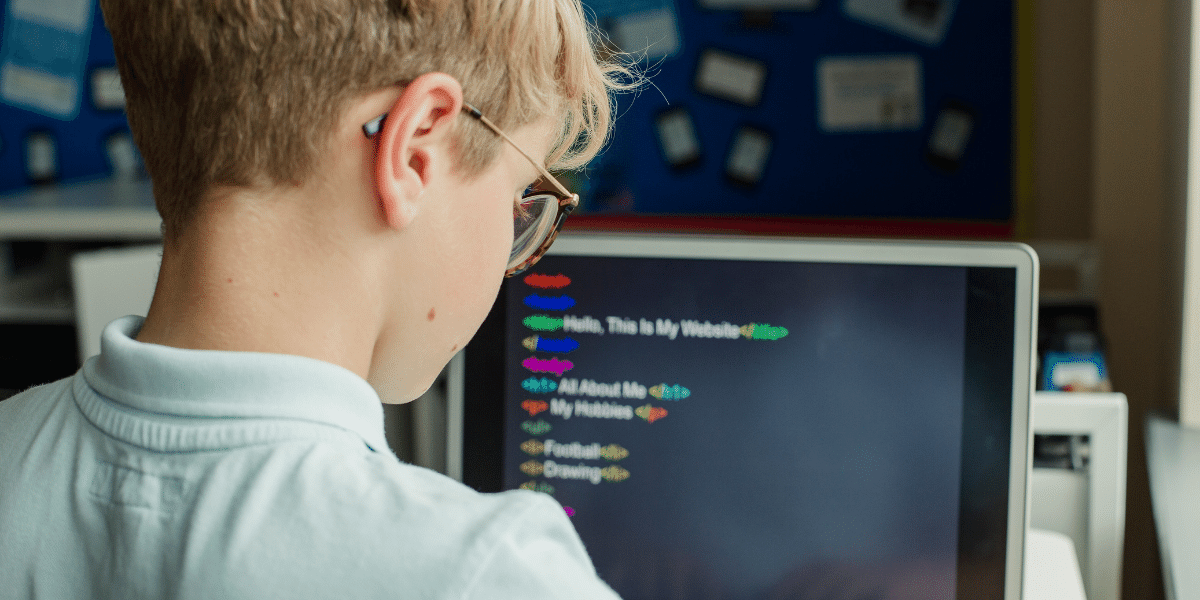In a world where everyone is looking at their smartphones, tablets, and computers to receive information, it’s a wonder that more people aren’t interested in learning what makes these devices tick. After all, many people are into fixing their own vehicles, and take the time to learn how they work simply because they love the process or want to save money on mechanical work.
Computer code has been around in different forms forthe last couple decades, with the most popular being HTML, CSS, Javascript and PHP (the four types of code that make up most websites today). Other types of code that exist are Python (a popular programming language), jQuery (a JS library for developing web pages), Raspberry Pi, SciPy, and dozens of other coding languages.
In this article, we’ll break down the importance of some of these coding languages, the best environments to learn them in, and how these languages can help students better shape the technologies of tomorrow.
Website Coding
Gone are the days of simple HTML websites. With around 455 million websites being built on WordPress (according to Envisage) – a popular builder that wouldn’t work without PHP code – it’s incredibly important to know how these platforms work if you’re working on your company or organization’s website.
CSS is shorthand for Cascading Style Sheet, which basically means that the code “cascades” down and “styles” a website’s look and feel. Without CSS, all of our websites would look like this one.
Javascript is a scripting language that is designed to work specifically with internet browsers (“Java” by itself is a programming language that is associated with applications, such as POS software on a checkout screen at your local grocery store). In a nutshell, Javascript is like the “brain” of a website; it tells everything on a website to “do” something like load a map, generate a popup, etc.
For most of us, website coding isn’t important because it has nothing to do with our line of work, and/or has no direct impact on our lives. But what if we could teach all of our students how to code?
This might change the way students learn how to interact with computers, tablets, and mobile devices by giving them an insight to what happens with their information as well as what’s making their online world work in the background.
Software, App, & Hardware Coding
According to an article on Forbes.com, there has been a shortage of software developers worldwide among the global worker shortage crisis. The article talks about the fact that less people are learning coding languages as well as how employers are hiring these developers.
The problem that we currently face in this area of academia is a lack of educated developers who know how these languages work being present in school districts as permanent teachers. Most coders learn on their own, go to college to learn coding, and/or take online courses to fill in learning gaps.
Coding languages like Java, Python, etc. run all of the technology that we interact with on a daily basis. Want to get into your hotel room with a card swipe? Check out at the store with a credit card? Adjust the volume settings in your car? That’s all coded into the hardware.
Creating Learning Environments For Coding
Like many educational trends, the best way to teach and implement a new topic of study is to ensure that students are in the proper learning environment. You can’t teach students how to bake without an oven, how to use a 3D printer without computers to design what you’re printing, or design architecture without modeling setups.
Solutions such as the Steelcase® Media:scape LearnLab are an excellent way to teach the next generation of students how to code. Combining innovative LearnLab design with non-traditional teaching pedagogy and unique media:scape technology creates the opportunity for creativity, engaged learning, and three distinct modes of sharing digital content: small team co-creation, group sharing and lecture.
- LearnLab provides multiple stages where instructors can engage with students;
- media:scape integrates furniture and technology to let instructors and students share digital information instantly;
- Small team breakouts occur at the table in the classroom, eliminating the need to move to another location;
- Face-to-face seating encourages student engagement and team collaboration;
- A triangular view plane offers students equal visual access to content, no matter where they’re located in the classroom.
(Learning Spaces, McCartneys.com, 2022)
Shaping The Future
As previously mentioned, code runs behind all of the technology that we use on a daily basis. If we’re not teaching the next generation how to create new languages, generate and manage existing coding languages, or simply how to understand what code is and why it’s important, society as a whole will continue to suffer from slower technological progress and lack of literacy.
By prioritizing code-learning environments for web development, software and application development, and hardware coding languages, our educational systems ensure that we’re churning out the next generation of coders to build new technologies and move the world forward.


